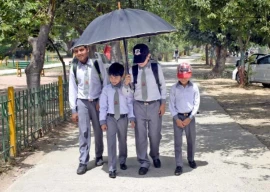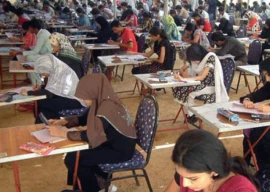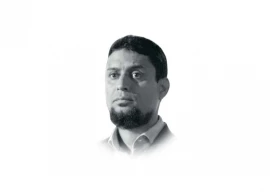
Sindh, one of the largest provinces in Pakistan, is grappling with a concerning issue—the high rate of educated youth unemployment.
According to recent research conducted by Gallup Pakistan and PRIDE, using data from the Labour Force Survey 2020-21, it has been found that a significant percentage of unemployed urban youth in Sindh hold university degrees. This revelation raises questions about the effectiveness of the education system and the availability of employment opportunities for educated youth in the province.
The study reveals that within Sindh, the overall unemployment rate among youth stands at 3.9%. While this rate might seem relatively low, the analysis of the labour force survey data by division uncovers regional disparities.
The Karachi division, with the largest population in Sindh, exhibits the highest youth unemployment rate of 11.18%. In contrast, the Larkana division records the lowest rate of 3.4%. These numbers highlight the need for targeted measures to address unemployment in specific regions.
Furthermore, the research demonstrates a disconcerting trend—a higher share of educated youth are unemployed compared to their less-educated counterparts in Sindh. Specifically, 23.6% of all unemployed urban youth in the province hold a university degree. This disparity raises concerns about the relevance of education and whether the current curriculum adequately prepares students for the job market.
Also read: Authorities on high alert as cyclone nears Sindh’s coastline
The overall unemployment rate in Sindh is 3.9%, but a deeper analysis reveals striking differences based on gender and location. The unemployment rate among females is substantially higher than among males, with rates of 6.6% and 3.3%, respectively.
Moreover, urban residents face higher unemployment rates compared to their rural counterparts, with rates of 5.9% and 2.1%, respectively. These findings call for gender-responsive policies and measures to bridge the urban-rural divide in employment opportunities.
Dr Shahid Naeem, Director of Policy Research at PRIDE, emphasises the need for urgent action. He points out that a significant proportion of unemployed youth in Sindh, approximately 41%, have attained matric and intermediate level education. This figure varies across different divisions of the province, with rates ranging from 33% in Hyderabad division to 47% in Karachi division.
Dr Naeem suggests that the Sindh government should take drastic steps to introduce marketable technical skills within mainstream education, enabling young individuals to secure employment after completing their studies.
Bilal Gilani, Executive Director at Gallup Pakistan, highlights the critical nature of the issue. He notes the presence of a substantial pool of unemployed and underemployed educated individuals in both urban and rural areas of Sindh.
Gilani raises questions about the effectiveness of current employment strategies and calls for urgent attention to prevent potential social upheaval driven by the frustrated youth of the country. He advocates for a comprehensive examination of the education system, with a focus on whether youth should be encouraged to pursue university degrees or consider skill-based technical education programs.
The findings of this research underscore the urgent need for the Sindh government to address the high rate of educated youth unemployment. It is crucial to formulate and implement policies that align education with market demands and create avenues for job creation and entrepreneurship. By investing in the future of its youth, Sindh can harness their potential and pave the way for sustainable economic growth and social development in the province.


















1716056648-0/IMG-20240512-WA0013-(1)1716056648-0-270x192.webp)



















COMMENTS
Comments are moderated and generally will be posted if they are on-topic and not abusive.
For more information, please see our Comments FAQ